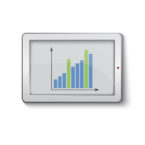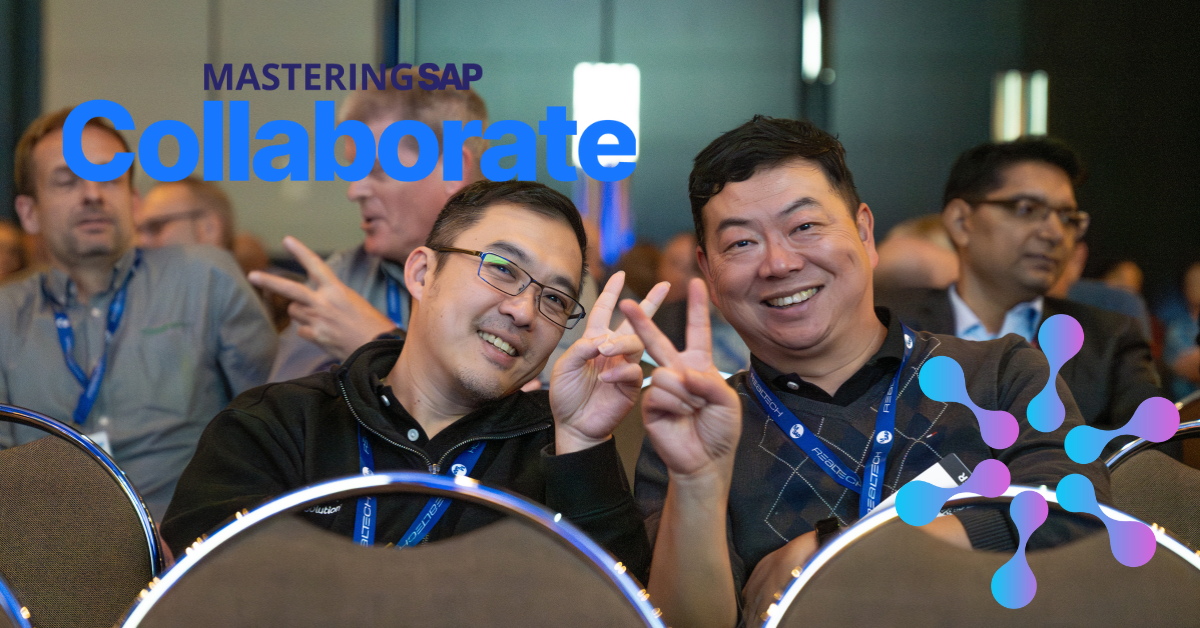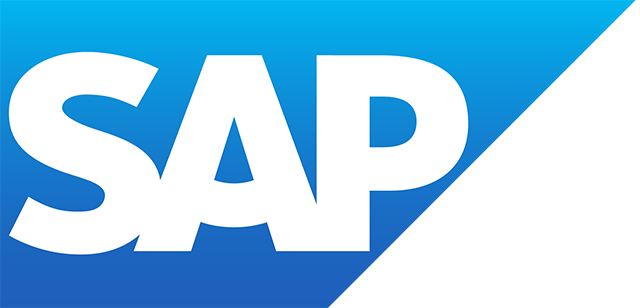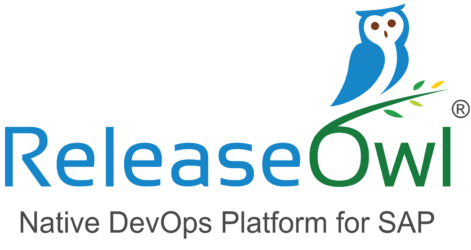SAP Enterprise Architecture Tools
Filter By
Browse By
- SAP Analytics and AI
- SAP Application Development and Integration
- All SAP Application Development and Integration
- SAP ABAP
- SAP ABAP Development Tools
- SAP ABAP Test Cockpit
- SAP API Management
- SAP BAPI
- SAP Basis
- SAP BRF
- SAP Business Application Studio
- SAP CMS
- SAP Design Studio
- SAP Development Tools
- SAP DevOps
- SAP EAI
- SAP EDI
- SAP Extension Suite
- SAP Fiori
- SAP Fiori Elements
- SAP Integration Suite
- SAP Low Code Application Development
- SAP Low Code Automation
- SAP Netweaver
- SAP Release Management
- SAP UI5
- SAP Web Application Server
- SAP Web IDE
- SAP Business Process Management
- SAP Center of Excellence
- SAP CIO
- SAP Customer Experience
- SAP Data and Data Management
- All SAP Data and Data Management
- SAP BW
- SAP BW/4HANA
- SAP Crystal Reports
- SAP Data Archiving
- SAP Data Center
- SAP Data Governance
- SAP Data Integration
- SAP Data Migration
- SAP Data Quality
- SAP Data Services
- SAP Data Strategy
- SAP Data Visualization
- SAP Data Warehouse Cloud
- SAP DMS
- SAP Document Control
- SAP EIM
- SAP ETL
- SAP ETL Tools
- SAP HANA
- SAP HANA Administration
- SAP HANA Deployment Infrastructure
- SAP HANA Studio
- SAP Master Data
- SAP Master Data Governance
- SAP MDM
- SAP Enterprise Architect
- SAP Enterprise Asset Management
- SAP ERP
- SAP Finance
- All SAP Finance
- SAP Accounting
- SAP AR AP
- SAP Asset Accounting
- SAP Billing Systems
- SAP BPC
- SAP BRIM
- SAP Cash Management
- SAP Central Finance
- SAP Controlling
- SAP COPA
- SAP Cost Center Accounting
- SAP Currency Risk
- SAP e-invoicing
- SAP FICO
- SAP Finance Automation
- SAP Advanced Financial Closing
- SAP Financial Consolidation
- SAP Financial Planning
- SAP FX Risk
- SAP General Ledger
- SAP Global Tax Management
- SAP Hyperion
- SAP Order to Cash
- SAP Payment Processing
- SAP Profitability Analysis
- SAP Rebate Management
- SAP S/4HANA Finance
- SAP SWIFT Compliance
- SAP Treasury Management
- SAP Universal Journal
- SAP Governance Risk and Compliance
- SAP Human Capital Management
- SAP Intelligent Technologies
- SAP Platform and Technology
- All SAP Platform and Technology
- SAP Business Technology Platform
- SAP Cloud Connector
- SAP Cloud Integration Platform
- SAP Cloud Migration
- SAP Cloud Platform
- SAP Cloud Providers
- SAP Cloud Strategy
- SAP Digital Signature
- SAP Container Platform
- SAP HANA Enterprise Cloud
- SAP Digital Asset Management
- SAP HEC
- SAP Digital Integration Hub
- SAP Hyperscalers
- SAP Infrastructure
- SAP Messaging
- SAP Smart Forms
- SAP Quality and Testing
- SAP Security
- SAP Spend Management
- SAP Supply Chain Management
- All SAP Supply Chain Management
- SAP APO
- SAP Asset Management
- SAP Business Network
- SAP Digital Manufacturing Cloud
- SAP Digital Twin
- SAP EWM
- SAP IBP
- SAP Inventory Management
- SAP Label Printing
- SAP Logistics
- SAP Manufacturing
- SAP Manufacturing Automation
- SAP MES
- SAP MII
- SAP MM
- SAP MRO
- SAP MRP
- SAP Order Management
- SAP Plant Maintenance
- SAP PLM
- SAP Production Planning
- SAP S&OP
- SAP SD
- SAP SPM
- SAP Supply Chain Planning
- SAP Track and Trace
- SAP Transportation Management
- SAP System Administration
What are SAP Enterprise Architecture Tools?
Enterprise Architecture (EA) tools allow organizations to examine the need for, as well as the impact of, change. They are intended to map the relationships and dependencies across partners, operating models, capabilities, people, processes, data, information, and applications and technologies. They are designed to provide a central repository to capture information that are important to an organization. EA tools are intended to help both investment decisions and, when combined with operational data, can help improve business processes and outcomes.
What are SAP Enterprise Architecture Tools?
Enterprise Architecture (EA) tools allow organizations to examine the need for, as well as the impact of, change. They are intended to map the relationships and dependencies across partners, operating models, capabilities, people, processes, data, information, and applications and technologies. They are designed to provide a central repository to capture information that are important to an organization. EA tools are intended to help both investment decisions and, when combined with operational data, can help improve business processes and outcomes.
There are many products in the Enterprise Architecture (EA) tools market, but the most familiar for SAP Enterprise Architects is likely SAP Enterprise Architecture (EA) Designer. SAP EA Designer is a web-based tool that is intended for collaboration between enterprise architects and the stakeholders in their organization. The collaborative nature of SAP EA Designer differentiates from some older EA tools. It is only by using EA tools that organizations can provide IT transparency and make complex topics easy to discuss for stakeholders.
Organizations that are implementing SAP Enterprise Architecture Tools should focus on the following best practices:
- Start with business definitions
- Integrate with any continuous improvement initiatives
- Build an experienced team that can communicate at all levels
- Limit or eliminate technology jargon
- Understand how SAP’s standard tools can assist with your initiative
- Leverage the experience of partners where appropriate
Standard SAP tools that can provide insight into enterprise architecture initiatives and that can complement your SAP Enterprise Architecture Tools initiatives include:
- SAP Enterprise Architecture Framework
- SAP Solution Manager
- SAP Solution Landscape Directory
- SAP NetWeaver Enterprise Services Repository
Additional Resources:
SAP offers multiple openSAP courses that are relevant to enterprise architects, and one that may be a good starting point is that on Enterprise Architecture in the Era of the Intelligent Enterprise. SAPinsider also recently conducted a SAP Enterprise Architect Global Summit and the sessions for this event can be viewed on-demand.
1269 results
-

- SAP BW
 Premium
Premium
How to Use BICS to Connect SAP BusinessObjects Client Tools to SAP BW (Part 1)
Reading time: 8 mins
Learn how the Business Intelligence Consumer Services (BICS) connection works internally, and connects Business Explorer (BEx) Queries to SAP BusinessObjects 4.1 client tools. Key Concept Business Intelligence Consumer Services (BICS) is an optimized data access protocol used within SAP systems. It connects SAP BW Online Analytical Processing (OLAP) sources, such as BEx Queries and InfoProviders,...…
-

- SAP Systems Administration
 Premium
Premium
Get Your System Clean with Risk Analysis and Remediation
Reading time: 15 mins
Become and stay Sarbanes-Oxley compliant with Risk Analysis and Remediation. Learn about its main features, technical architecture, and setup. Key Concept SAP GRC Access Control delivers controls that identify and prevent access and authorization risks in cross-enterprise systems. The controls prevent fraud and reduce the cost of continuous compliance and control. SAP GRC Access Control...…
-

 Premium
Premium
Make the Most of APO
Reading time: 47 mins
The ability to produce fast, accurate APO Demand Planning (DP) reports requires close collaboration between the APO and BW teams. You want to optimize the data flow between DP and BW, and the advice and best practices presented here will help you achieve this goal. Key Concept Demand Planning (DP) is the tool used within...…
-
-

- SAP Workloads
 Premium
Premium
Get Started with Cloud Computing and SAP Today
Reading time: 18 mins
Thinking about cloud computing? Not sure how to get started? Discover the different types of cloud computing models with a focus on Infrastructure as a Service. Included are immediate SAP use cases for applying cloud technology, SAP-specific challenges and support considerations, and guidelines for building your own hybrid cloud. Key Concept Infrastructure as a Service...…
-

Commodity Risk Management
Reading time: 8 mins
Due to the volatile nature of commodity prices, many businesses in the manufacturing industry find it difficult to align operating and profit margins, and are often faced with uncertainty and risk at every step of the buying and selling process. By demonstrating how uncertainty in this niche sector impacts different industries, the author of this…
-

- SAP AI
 Premium
Premium
Exploring the Landscape of SAP Business AI: Strategy, Use Cases, and Architecture
Click Here to View Session Deck. This presentation will delve into the world of SAP Business AI, offering attendees a comprehensive overview of its strategic applications, diverse use cases, and robust architecture. Whether you’re new to SAP Business AI or seeking to enhance your existing knowledge, this session promises to offer valuable insights and guidance...…
-

Building an Effective Testing Architecture for SAP Implementations
Reading time: 5 mins
Implementing SAP S/4HANA successfully requires a structured testing architecture divided into four phases—Prepare, Explore, Realize, and Deploy—each focusing on thorough planning, scenario definition, core testing activities, and final validation, respectively, while utilizing specialized tools to enhance efficiency and mitigate risks.
-
-

- SAP Integration Suite
 Premium
Premium
Embrace Event-Driven Architecture with SAP Integration Suite
Click Here to View Session Deck. In the dynamic landscape of event-driven paradigms, event-driven architectures (EDA) have emerged as a dominant force. While numerous software providers tend to focus on the technical dimensions of EDA, SAP distinguishes itself by underscoring the profound business advantages it offers. This session delves into the realm of harnessing event-driven...…
-

Your Enterprise Analytics Strategy Is Incomplete Without a Data Hub
Reading time: 4 mins
by Kumar Singh, Research Director, Automation & Analytics, Supply Chain Management, SAPinsider Data Hubs, Data Lakes and Data Warehouses…..in this case…terminology matters I am an anti-jargon guy, but sometimes, jargons do matter. This is one such case. “We need a data lake in our data architecture”-is something I have been hearing a lot recently.…
-

Tools for Making Machine Learning Easier and Smoother
Reading time: 10 mins
Understand the concept of blockchain and explore the services released by SAP Cloud Platform Blockchain service that allow users to develop blockchain scenarios. Learn how to connect a manufacturing execution system (MES) to SAP ERP Central Component (SAP ECC). Understand common use cases and best practices during the implementation. Learn integration options, avoid common pitfalls,…
Become a Member
Unlimited access to thousands of resources for SAP-specific expertise that can only be found here.
Become a Partner
Access exclusive SAP insights, expert marketing strategies, and high-value services including research reports, webinars, and buyers' guides, all designed to boost your campaign ROI by up to 50% within the SAP ecosystem.
Upcoming Events
Related Vendors
Your request has been successfully sent


